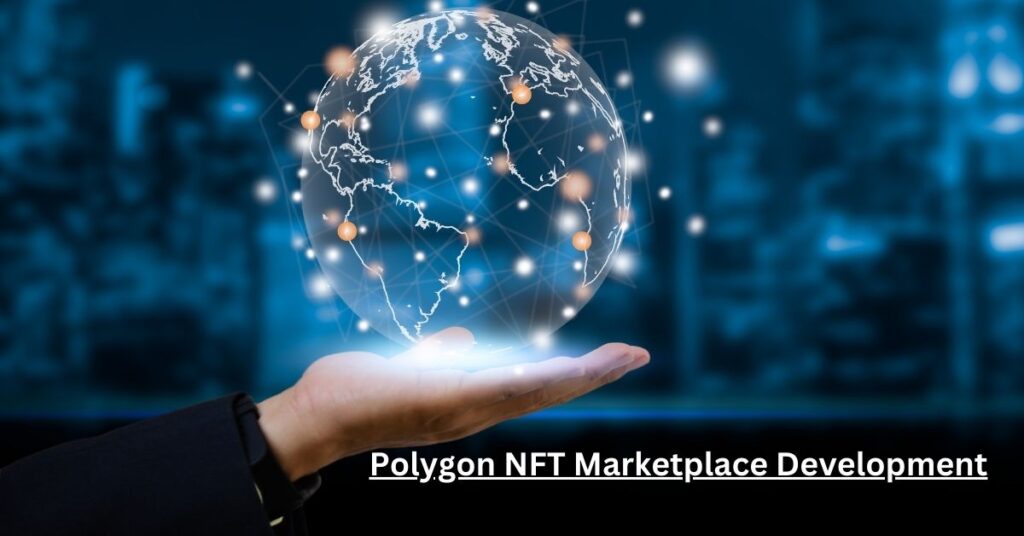
Polygon is a scalability solution or alternative chain for the Ethereum network. Despite its widespread adoption, Ethereum remains sluggish and costly. Polygon solves this problem because it processes transactions off-chain, away from the Ethereum network.
While the recent Ethereum Merge is an important first step in increasing blockchain transaction throughput, the vast majority of necessary improvements are still in development. As of January 2023, Ethereum can handle between 10 and 30 transactions per second, with fees ranging from around $25. During heavy network usage, costs may increase by two or three.
This is when polygon-based scaling algorithms come in handy. Polygon reduces costs by processing transactions in bulk on its own proof-of-stake blockchain. Polygon asserts it can handle as many as 65,000 transactions per second at less than one cent.

Read More: White label Marketplace Development
Polygon-shaped products from well-known companies and upstarts
Since 2022, when major brands, including Starbucks, Nike, Reddit, Meta, and DraftKings, have launched projects on Polygon, the platform has attracted widespread notice. Disney’s Accelerator program also used this blockchain. The president of Polygon Labs attributes the company’s rapid growth and the success of these major companies to the creation of “this great funnel for partners to come through to make the onboarding to Polygon really seamless.”
The Positive Effects of Polygon NFT Marketplace Development
Polygon NFT Marketplace Development – Polygon-based NFT (non-fungible token) exchanges have some unique benefits over more conventional blockchain systems. The NFT’s primary value in polygon markets is:
- Polygons allow for rapid transfer of data over a multichain network. The lightning-fast connectivity is a major selling point.
- Stringent security standards and robust data encryption protect each transaction.
- This opens the door to a novel, speedy, efficient scaling method.
- What sets it apart from other blockchains is its improved scalability, adaptability, and interoperability.
- Provides NFTs on a polygon with significantly lower gas fees than other blockchain networks. The transaction fees are also reduced.
The Polygon NFT Market’s Key Features
When it comes to blockchain technology, Polygon Matic Network is a clear frontrunner. Because of this, it lends itself well to the growth of NFT marketplaces. In addition, its primary characteristics make it an improved candidate for becoming a commercial hub.
Safety features
The Stack Consensus Mechanism addresses the Polygon Network platform’s decentralization problems. Even in multichain ecosystems, it provides lightning-fast transactions. It has a high transaction throughput.
Network scalability
Polygons improve the network’s scalability because they allow for the addition of more side chains. Because of this, a single side chain can process 10,000 transactions at once.
Compatibility
Multiple Ethereum-compatible blockchains can be connected using Polygon Matic.
Interoperability
Consistency is the defining characteristic of a polygon Matic chain. This chain is interoperable because it can establish connections to other Ethereum-compatible blockchains. Therefore, providing a functional multichain structure.
Modularity
The polygon side chain network ecology dissects the system into interdependent and autonomous components. It includes future-proofing and upgrade options.
Local Currency
Polygon Sidechain, originally announced under the moniker Matic before being rebranded, also features a native token.
The Matic token serves as a means of trade in the same way that other tokens do. Tokens can also be stored on it.
Polygonal NFT mining
Polygonal NFTs are minted in much the same way as NFTs in other blockchain networks. It’s simple to convert digital assets into NFT and then put them up for auction on the NFT market. Controls token ownership, activity tracking, and smart contract management.
Read Next Blog:
NFT Exhibitions – What Do They Have in Store for The Future?






